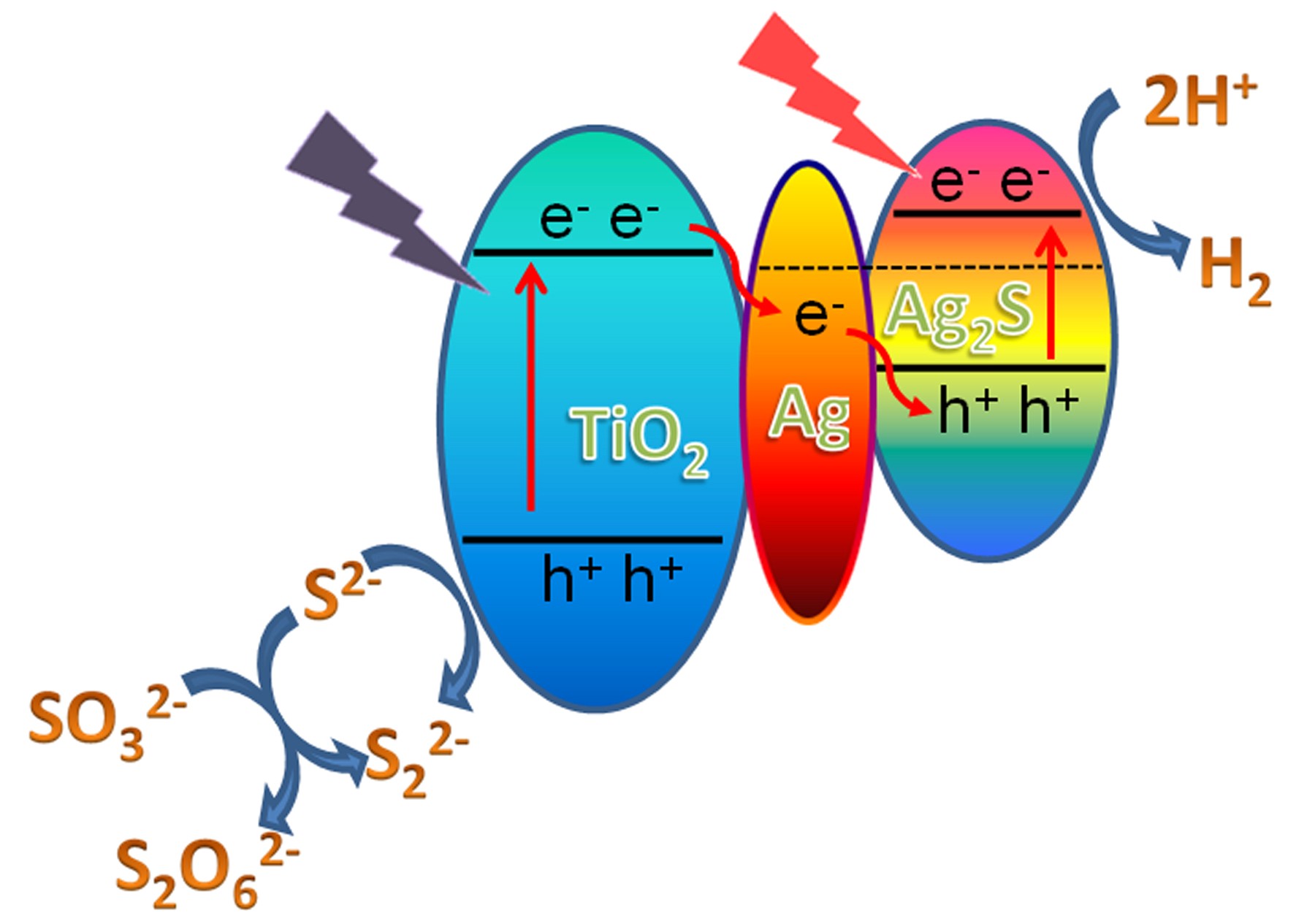Full-spectrum Z-scheme photocatalysis by interfacial energy-band alignment
Light absorption is a key factor to the development of a photocatalytic system, in which harvesting solar energy in broad spectrum is the main pursuit for researchers to optimize the charge-generation step of photocatalysis. Most semiconductors such as TiO2 that can offer good photocatalysis performance have wide bandgaps and primarily absorb the ultraviolet (UV) photons which only account for ca. 5% of solar spectrum. To overcome this limitation, Z scheme provides a promising approach to achieve broad-spectrum photocatalysis in which the two integrated semiconductors that can complementarily absorb UV and visible (vis)-near infrared (NIR) light, respectively. Towards this configuration, we can integrate TiO2 with another semiconductor with a bandgap of ~1.0 eV (e.g., Ag2S); however, Ag2S has straddling band structure alignment with TiO2, constituting an obstacle to forming the Z-scheme for photocatalytic hydrogen production.
To address this grand challenge, Prof. Yujie Xiong’s research group at the University of Science and Technology of China has developed an approach by inserting Ag at the interface of Ag2S with TiO2. In this approach, interfacing Ag2S with Ag upshifts the energy band of Ag2S, which turns the straddling band structure alignment between Ag2S with TiO2 into Z scheme. The obtained ternary hybrid structures exhibit dramatically enhanced performance in photocatalytic hydrogen production under full-spectrum light illumination. This work published in Nano Res. 2015, 8, 3621-3629 provides a new approach to the band structure engineering of semiconductors, and will absolutely serve as a strategy for better implementing narrow-bandgap semiconductors in the Z-scheme design towards full-spectrum photocatalysis.
To fabricate the design, the researchers have developed a unique approach to synthesize Ag2S–Ag–TiO2 hybrid structures through two steps: growth of TiO2 on Ag nanocubes by taking advantage of strong Ag-O bonding, and sulfidation of Ag nanocubes into Ag2S. Given the strong Ag-O bonding, a trace amount of Ag can be separated from Ag2S and retained on the Ag2S surface, forming the Ag2S-Ag-TiO2 interface. The most challenging part of this work is to resolve the interfacial Ag in hybrid structures, which can hardly be achieved by conventional techniques such as X-ray diffraction. In collaborations with the Catalysis and Surface Physics Endstation at the BL11U beamline in the National Synchrotron Radiation Laboratory (NSRL) in Hefei, China, the researchers have employed synchrotron-radiation X-ray photon spectroscopy to prove the existence of elemental Ag at the interface, providing a clear picture on the working mechanism.

Schematic illustration for the formation of TiO2-Ag2S Z-scheme photocatalytic system through interfacial Ag
4.jpg
Back

